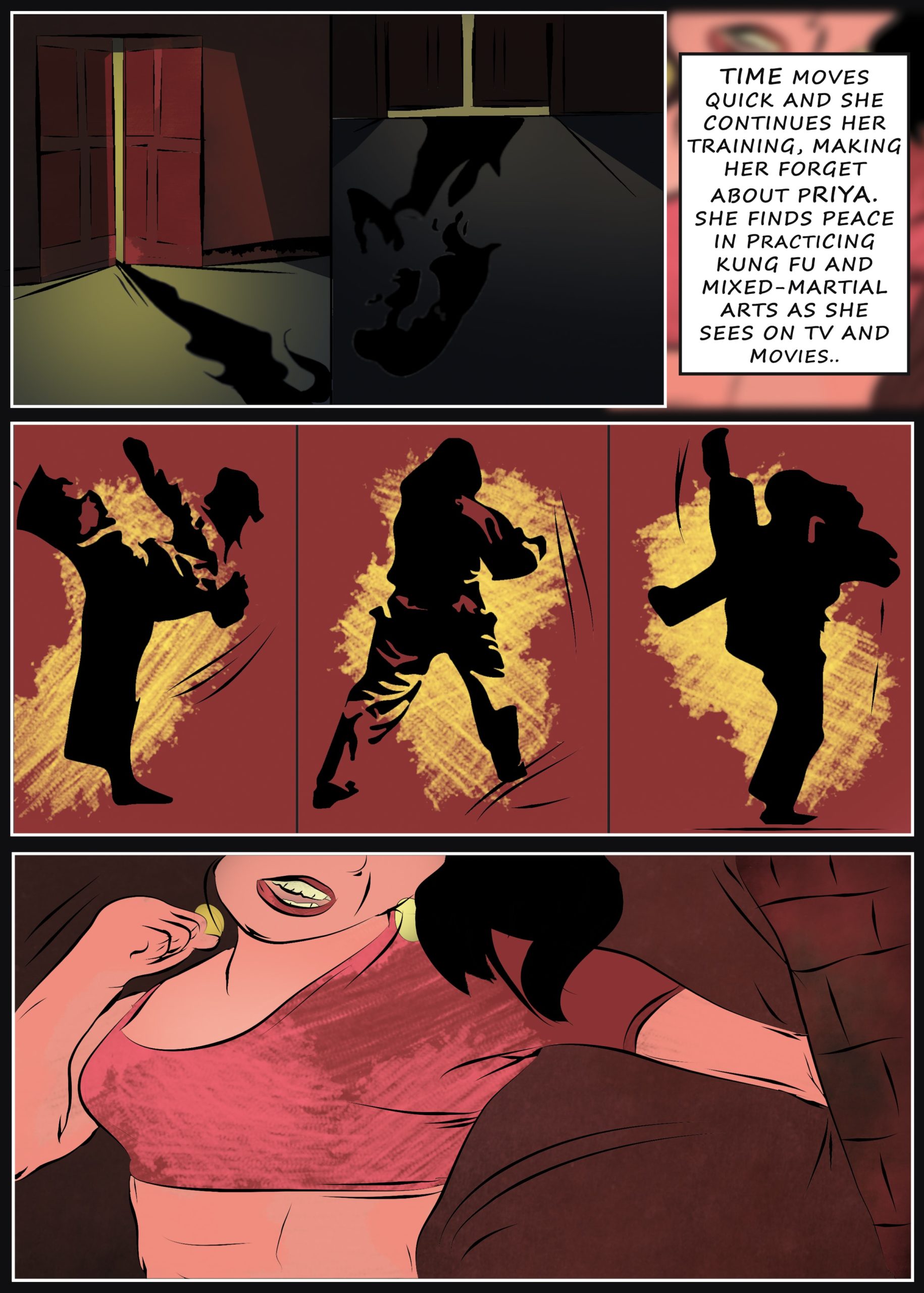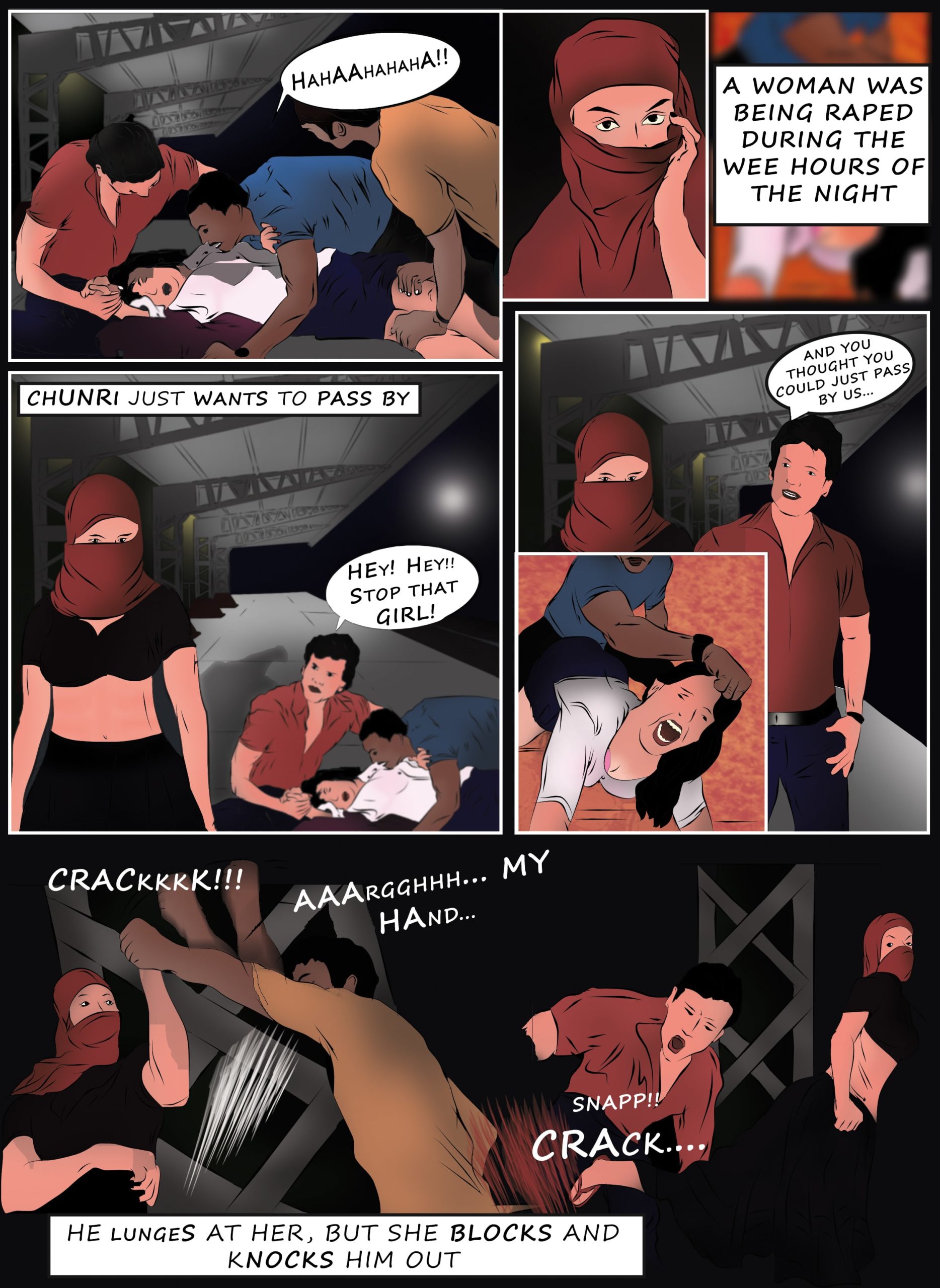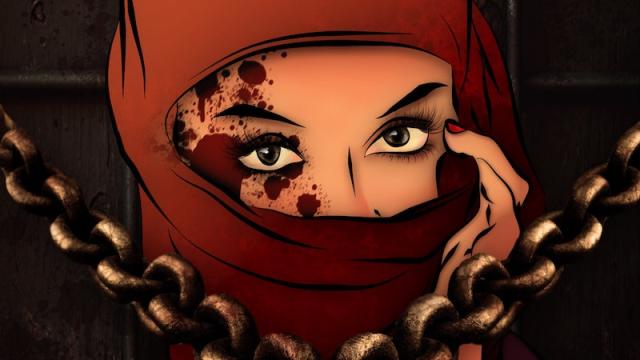In Kamathipura, Mumbai’s oldest red-light district, it’s estimated that there are currently some 20,000 sex workers doing business out of brothels. Oftentimes the “women” who are offered up by pimps and madams are are actually young girls who’ve been sold into sex slavery. In Baber K. Khan and M. Basit Ansari’s Chunri: The Dancing Death, a young girl born into prostitution finds herself trapped by happenstance, but is inspired by Bruce Lee films to rebel.
M. Basit Ansari
While Chunri’s days are spent preparing for the life of an escort that her captors have planned for her, she spends her free time watching old kung fu movies and teaching herself how to fight.

After the sudden death of one of Chunri’s friends at the hands of an aggressive john, she doubles down on her physical training — which has the double-edged benefit of both keeping her fit and making one of her brothel’s most in-demand dancers. One night, when a local crime boss sees Chunri, he demands that her madam arrange a personal dance for him.
When he gets too handsy with Chunri, her fighting instincts kick in and she accidentally kills him, prompting her to flee the brothel and set out on a rampage of vengeance against the men who’ve wronged her and other women like her. As Chunri makes her way through the red-light district, taking out groups of men she catches preying on women, word of her actions begin to spread and she becomes a symbol for justice in the community.
When we spoke with Khan via email, he explained that the idea for Chunri came to him after he met a sex worker in Lahore, Pakistan, who told him that her mother had been paid specifically to have her so that she could be sold into a brothel.
“That’s how entire brothel has been run for generations,” Khan said. “All of them were paid, but tight-knit between themselves.”
Not long after Khan met the woman, he was moved by journalist Sandra Hoyn’s photo essay about the realities of living and working in a Bangladeshi brothel, and he began working on Chunri.

It’s estimated that India is home to some 18 million enslaved people — five times more than anywhere else in the world. India’s made gradual legislative progress towards treating the survivors of human trafficking and sex slavery as victims rather than criminals themselves, but education remains one of the most effective means of challenging the systems that make these human rights violations possible.
And that’s what Chunri‘s really all about — educating people. What the comic lacks in fine polish, it makes up for with its core messages: Modern-day slavery is very real, it’s going on all around us, and communities will have to band together to end it.
“Chunri’s story exists in 2017 and will continue to exist until who-knows-when,” Khan said. “We struggle, fight, fall, and survive. There is a hero in all of us; we just need to uncover it.”
You can read the rest of Chunri here.

Comments
2 responses to “In Chunri, A Woman Rises Up To Combat Mumbai’s Underworld Of Human Trafficking And Sex Slavery”
This is all fine and all, but why is it posted on Kotaku?
Equal parts comics and fulfilling daily virtue signaling quota.